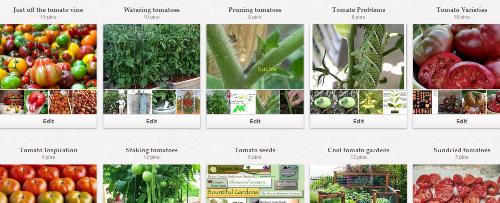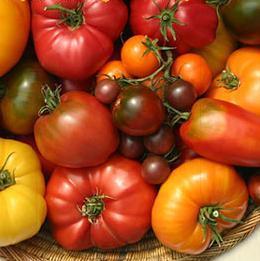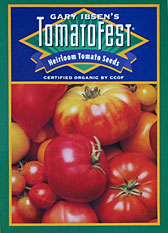| Back to Back Issues Page | ||||||||||
 |
||||||||||
|
[Tomato Dirt] Your Guide for Choosing Tomato Season for the Upcoming Season December 13, 2013 |
||||||||||
Tomato Dirt Newsletter
|
Tomato Dirt is on Pinterest!
Join us on Pinterest! Browse our 100+ boards (and growing) for all kinds of tomato inspiration and practical information: growing tomatoes, tomato seeds, cold frames for tomatoes, tomato books, tomato greenhouses, , indoor tomatoes – even crafts to do with a tomato theme, now that cold weather is here. Happy pinning!
 |

Feature: Your Guide for Choosing Tomato Seeds for Next Season
 |
Image: TomatoFest |
- Your garden type. Will you grow tomatoes in a garden plot or containers? Outdoors or indoors? Specific varieties work best for each of those environments.
- Your purpose. Decide how you want to use tomatoes to help you decide what varieties to grow. Do you want a steady supply for slicing, sandwiches, and snacking? If so, choose indeterminate globes, beefsteaks, and cherry tomatoes. Or maybe you want to can and dry tomatoes. Determinates (those that produce their fruit in a short period) and less juicy types allow you to harvest most of a crop at one time and process them. Perhaps you like to make the family tomato sauce recipe, in which case you need to grow large amounts of paste tomatoes.
- Your season length. Among the thousands of tomato varieties are those that grow in a short season (fewer than 65 days to maturity or less), mid-season (65-79 days to maturity) or late season (80 days to maturity or more). If you live in a northern area, you may need to grow short season or mid-season varieties in order to harvest a strong crop before frost. Or perhaps you wish to grow plants with various maturity dates so you can enjoy fresh tomatoes throughout the season.
- Your growing conditions. Some varieties flourish in hot, humid climate; some produce well in colder areas; still others are blight-resistant. Know the growing conditions your tomatoes will face and select varieties that will cooperate well.
- Your previous garden. If you’ve grown tomatoes last year or other times in the past, go back and look at your notes. Which varieties worked well, stayed healthy, and produced? Which were a struggle? This information will help you decide which varieties you want to grow again and which to avoid.
A Quick Tip about Buying Tomato Seeds
 |
Check on These Fun Tomato Seeds
Click image to learn more.

Heirloom Tomato Seed Collection |
|---|
More about Choosing and Buying Tomato Seeds
| Online Tomato Seed Vendors | Seed Catalog Review: TomatoFest Seed Catalog | Seed Catalog Review: Burpee Seeds | Tomato Varieties: How to Understand Ways They Are Classified |
|---|
That’s it for now. More next time!
Until then, happy gardening!
![]()
Kathy with Tomato Dirt
www.tomatodirt.com
Find us on Facebook!


